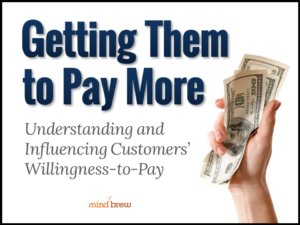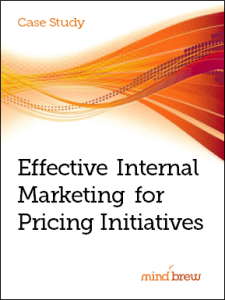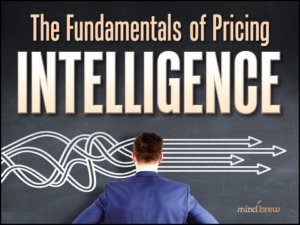Systematically analyzing and influencing customers’ willingness to pay is one of the most powerful levers that organizations have at their disposal to affect margins. But we often find that certain persistent myths make teams unwilling to even consider tackling this topic. These four myths are particularly widespread:
- There is no middle ground. Some people think that everyone has the same willingness to pay. Others say that everyone’s willingness to pay is so unique that you can’t possibly measure it. Both misperceptions prevent them from taking on willingness to pay projects.
- You can’t measure or predict it. Since you can’t read people’s minds, you can’t ever really know what they’re willing to pay. So why try?
- The buyers will tell you. If you have a good relationship with your customers, you can ask them what their budget is, and they’ll give you the true number. You can just use that to determine pricing.
- It is what it is. The market determines what the customer’s willingness to pay is at any point in time. All you can do is try to capture as much as you can.
What’s particularly insidious about these four myths is that all of them are sell-fulfilling. For example, if you believe you can’t measure willingness to pay, you will never try. Thus, you never measure willingness to pay, reinforcing your belief in the myth.
But none of these myths is actually true.
- You CAN segment customers into groups. We’ve never yet seen an industry where every customer was exactly the same or where each customer was so different that you couldn’t arrange them into some buckets. It’s never all or nothing.
- You CAN use historical data to predict willingness to pay. No, you can’t read a customer’s mind, but you can use past experience — and more importantly, past data — to develop a range of where their willingness to pay likely is. It won’t be exact, but you can get close.
- Buyers WILL NOT tell you the truth. It’s in the buyers’ best interest to get the lowest price possible. The fact that they are complaining about your price doesn’t necessarily mean they are willing to pay less. It just means that they are doing everything they can to obtain a discount.
- You CAN influence willingness to pay. It’s true that you probably can’t affect willingness to pay much when the deal is at the negotiation stage. But the actions you take today will definitely affect willingness to pay tomorrow. And the smart money is on influencing the market rather than just accepting it as it is.
As we already mentioned, systematically measuring and influencing customers’ willingness to pay at-scale — even just a tiny bit — can mean huge improvements to the bottom line.
Of course, the first step is realizing it’s possible. But once you’re over that hurdle, it’s just a matter of putting a plan into action.
If you’re ready to stop believing these myths, check out the webinar Getting Them to Pay More. It takes you behind the scenes to show you how buyers’ evaluate prices. And it offers proven strategies that other organizations are using to influence the prices customers are willing to pay.
We know that it’s possible to get customers to pay more because we’ve seen other B2B firms do it. Don’t let your organization be the one that’s left behind.














